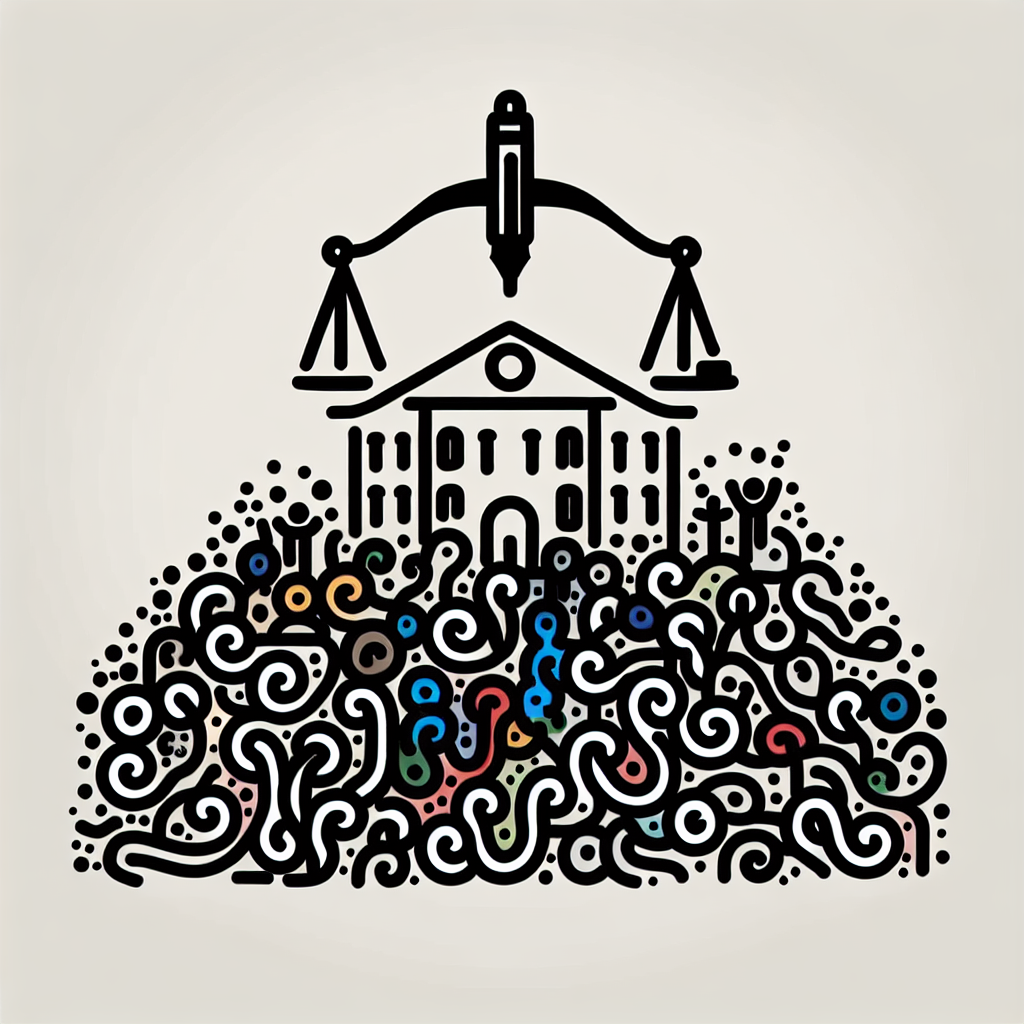Introduction
The college admissions landscape is undergoing significant changes as we approach 2025. Driven by shifts in demographics, rapid advancements in technology, and evolving public policy, the process of applying to and being accepted by colleges is more complex and competitive than ever before. Institutions are re-evaluating long-standing practices in response to new challenges and opportunities.
Understanding these trends is essential for students, educators, and policymakers alike. Demographic shifts, including changes in the number and background of high school graduates, are influencing application patterns and institutional priorities. Technological innovations such as AI-based admissions tools and virtual recruitment platforms are transforming how colleges evaluate candidates. Meanwhile, policy changes—ranging from test-optional admissions to affirmative action rulings—are reshaping the criteria colleges use to build their incoming classes.
Key data from organizations such as the National Center for Education Statistics (NCES), Harvard University, University of California, Berkeley, the Pew Research Center, and the American Council on Education (ACE) provide valuable insight into these college admissions trends for 2025. By examining these sources, stakeholders can better prepare for the realities of the evolving higher education environment.

Enrollment Trends and Forecasts
Projected Growth in College Enrollment
College admissions trends 2025 are expected to reflect a steady increase in overall enrollment figures. According to NCES Projections, the number of students enrolling in degree-granting postsecondary institutions is projected to grow through 2025. This growth is driven by multiple factors, including the expansion of online and hybrid learning models, which provide greater flexibility for students balancing education with work or family responsibilities. Additionally, increased access through community colleges and alternative educational pathways has made higher education more attainable for a broader segment of the population.
Demographic Shifts Among Applicants
College admissions trends 2025 also show significant demographic shifts among applicants. The Pew Research Center reports notable growth in the number of first-generation college students, reflecting broader efforts to improve access and equity in higher education. Furthermore, data from the NCES indicates a surge in minority student participation, signaling a more diverse applicant pool. These national trends are accompanied by regional variations in enrollment patterns, with some areas experiencing faster growth due to local demographic and economic factors.

Diversity and Inclusion in Admissions
Rise in Minority and Underrepresented Student Participation
College admissions trends in 2025 show a marked increase in participation from minority and underrepresented groups. Institutions like UC Berkeley have implemented comprehensive initiatives aimed at boosting diversity in admissions. These include partnerships with community-based organizations, culturally responsive recruitment strategies, and pipeline programs targeting students from historically underserved areas.
There has also been an expansion of targeted outreach programs in both rural and urban underserved communities. These programs aim to demystify the college application process and provide resources such as mentorship, application assistance, and college readiness workshops. As a result, colleges are seeing a steady growth in multilingual and multicultural student populations, reflecting a broader commitment to inclusive representation on campus.
Policies Supporting Inclusion
To promote equity, many institutions have reevaluated traditional admissions policies. One notable trend in 2025 is the elimination of legacy admissions at several colleges. This move aims to level the playing field for applicants from diverse backgrounds who may not have familial ties to elite institutions.
Another significant shift is the continued adoption of test-blind and test-optional policies, which prioritize a holistic review of applicants. These policies reduce barriers for students who may not have access to standardized test preparation resources. The Harvard Report highlights how such measures have contributed to a more diverse applicant pool and greater inclusion of students from marginalized communities.
Additionally, colleges are increasing the availability of scholarships and financial aid for marginalized groups. These financial supports are crucial in enabling access to higher education for students who might otherwise be unable to afford it, further reinforcing the commitment to diversity and inclusion in college admissions trends for 2025.

Evolving Admissions Criteria
Decline of Standardized Testing
One of the most significant changes in college admissions trends for 2025 is the continued decline of standardized testing requirements. Many institutions, including prestigious universities like Harvard, have adopted test-optional policies. This shift reflects a growing belief that SAT and ACT scores are not always the best indicators of a student's academic potential.
As a result, colleges are placing greater emphasis on other aspects of a student's application. High school GPA, the rigor of coursework, letters of recommendation, and involvement in extracurricular activities now carry more weight. These elements offer a more comprehensive picture of a student's academic abilities and engagement.
Rise of Holistic Admissions
Alongside the decline of standardized testing, there has been a notable rise in holistic admissions practices. Colleges are moving toward evaluating applicants based on a wider range of criteria that reflect their personal experiences and character.
This approach includes assessing personal essays, civic engagement, and an applicant’s background. Factors such as life challenges and socioeconomic status are receiving increased consideration. According to the American Council on Education (ACE), holistic review is becoming a standard practice in admissions, allowing institutions to identify students with strong potential who may not have traditional metrics of success.
These shifts in admissions criteria are reshaping how students prepare for college and how institutions define merit in the context of college admissions trends for 2025.

Technology and Innovation in Admissions
Digital Transformation of the Application Process
Colleges are increasingly leveraging technology to streamline and modernize the admissions process. One of the most notable advancements is the use of AI-powered tools for application screening. These tools help admissions officers efficiently evaluate large volumes of applications by identifying key qualifications and patterns (ACE).
Virtual campus tours and online interviews have also become standard practice, allowing prospective students to engage with institutions remotely. This shift not only enhances accessibility but also reduces travel-related barriers for applicants across the globe.
In addition, institutions are beginning to adopt blockchain technology for issuing digital transcripts and credentials. These secure, tamper-proof records simplify the process of verifying academic achievements and reduce administrative overhead.
Data-Driven Decision Making
Data analytics is playing a crucial role in shaping college admissions trends in 2025. Colleges are using predictive analytics to forecast student success and retention. By analyzing historical data, institutions can identify applicants who are more likely to thrive academically and socially.
Machine learning algorithms further support this approach by helping identify ideal student profiles. These models analyze a wide range of variables, including academic performance, extracurricular involvement, and demographic factors, to inform more strategic admissions decisions.

Societal and Policy Influences
Public Perception and Political Climate
Public perception surrounding college admissions trends in 2025 has been significantly shaped by reactions to affirmative action policies. The Supreme Court's 2023 decision to strike down race-conscious admissions at public and private universities has intensified national debate. Some view the decision as a move toward merit-based admissions, while others argue it undermines efforts to promote racial diversity in higher education.
Social movements focused on racial justice and income equality continue to influence how colleges approach admissions. Institutions are increasingly exploring alternative strategies to maintain diverse student bodies—such as considering socioeconomic background, first-generation college status, and geographic diversity—in response to both legal constraints and public pressure.
Federal and State Policy Changes
Federal policy changes are also reshaping college admissions trends in 2025. Revisions to the Free Application for Federal Student Aid (FAFSA) have simplified the process and adjusted how financial need is calculated. These updates aim to expand access to financial aid, especially for low-income families. Additionally, changes in Pell Grant eligibility criteria have increased the number of students who qualify, further impacting enrollment patterns at both public and private institutions.
At the state level, new mandates are requiring public universities to enhance transparency in admissions processes. Several states have passed legislation requiring schools to publicly disclose admissions criteria, acceptance rates by demographic category, and the role of legacy status or donor influence. These policies are designed to promote fairness and rebuild public trust in the admissions system as it evolves.

Adapting to Changing Student Demand
As part of the evolving landscape of college admissions trends 2025, institutions are realigning their academic offerings to better match student interests and market needs. Colleges are expanding curricula by introducing new majors in high-demand fields such as data science, artificial intelligence, and sustainability. Interdisciplinary programs that blend technology with the liberal arts are also becoming more popular, catering to students seeking flexible, future-oriented education paths.
In addition, partnerships with industry are playing a larger role in strategic planning. Institutions are collaborating with companies to ensure that students acquire in-demand skills and have clear pathways to employment. These collaborations include co-op programs, internship pipelines, and curriculum development that reflects industry standards and expectations.
Competitive Positioning
To remain competitive amid shifting college admissions trends 2025, many institutions are ramping up their branding and outreach efforts. This includes targeted marketing campaigns aimed at both domestic and international audiences, as well as increasing engagement through digital platforms and virtual tours.
Colleges are also focusing on mission-driven admissions policies to set themselves apart. Some are emphasizing commitments to access and equity, while others highlight unique educational philosophies or community engagement models. These strategies help institutions attract students who align with their values and long-term goals, reinforcing both identity and appeal in a crowded admissions landscape.

How Applicants Can Prepare for 2025
As college admissions trends 2025 continue to evolve, students should place a stronger emphasis on crafting a personal narrative that reflects authenticity and growth. Admissions officers are increasingly valuing applicants who demonstrate self-awareness, resilience, and a clear sense of purpose through essays and interviews. Instead of focusing solely on academic metrics, students should highlight meaningful extracurriculars, community engagement, and unique life experiences.
Non-academic factors are playing a larger role in admissions decisions. Characteristics such as leadership, initiative, and personal character are being weighed more heavily. This shift means that applicants should consider how their activities and interests contribute to their personal development and can be communicated effectively in applications.
In light of these changes, students are encouraged to broaden their perspective when building a college list. Rather than focusing strictly on rankings, applicants should evaluate colleges based on fit, academic programs, campus culture, and support services. This approach opens up more opportunities and reduces pressure associated with highly selective institutions.
Resources for Support
To navigate college admissions trends 2025, students and families can benefit from a range of support resources. School counselors remain a primary source of guidance, helping students identify appropriate schools, prepare application materials, and understand admissions timelines. Additionally, nonprofit organizations such as College Advising Corps and QuestBridge offer free or low-cost college advising tailored to underrepresented or low-income students.
Financial literacy has become increasingly important as families evaluate affordability and return on investment. Tools like the Net Price Calculator, available on most college websites, help estimate actual costs after financial aid. Third-party platforms such as BigFuture by the College Board and FAFSA resources also provide valuable planning tools. Early preparation and open communication about financial goals can greatly reduce stress during the application process.

Conclusion
As we look ahead to 2025, several college admissions trends are set to shape the landscape of higher education. Key developments include the continued shift toward test-optional policies, the increasing use of AI and data analytics in application review processes, and a greater emphasis on holistic admissions that consider personal experiences and diverse backgrounds. Additionally, demographic changes and growing concerns about access and affordability are influencing how institutions attract and evaluate applicants.
In this evolving environment, adaptability and awareness are crucial. Students, families, educators, and admissions officers must stay informed about new policies, technologies, and strategies to ensure fair and successful outcomes. Flexibility in response to changing standards and expectations will be essential for navigating the admissions process effectively.
Looking to the future, the challenge lies in balancing growth, equity, and innovation. Colleges and universities must continue to evolve their admissions practices to meet the needs of a diverse student population while maintaining academic standards. By fostering transparency and embracing new tools thoughtfully, institutions can support a more inclusive and forward-thinking admissions system that reflects the realities of 2025 and beyond.














